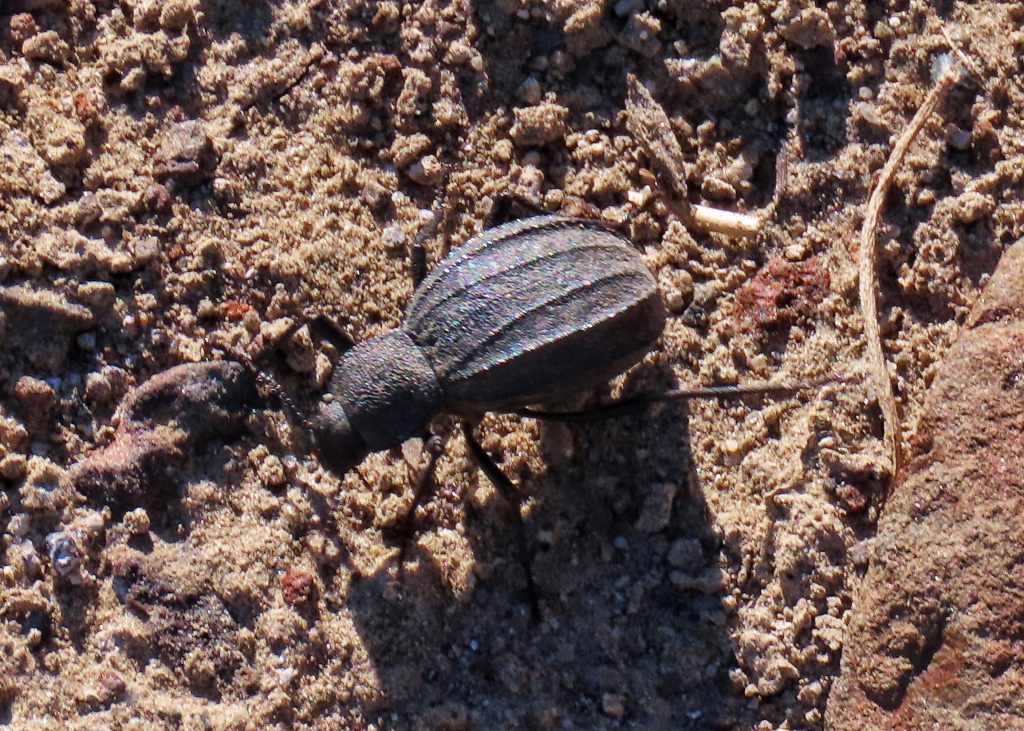
It was surprising to me that this apparently relatively common Tenebrionid beetle was not represented on BugGuide from the state of Oregon. In fact when you look up the data for the tribe Asidini, which comprises 7 genera and dozens of species, the little black dot generated by this particular specimen in the Oregon column in the month of November is the only one you will find for that state. Those kind of things are always gratifying (at least to my ego), but I’m fully aware that it was just the luck of the draw. They have been documented, by the eminent coleopterist Melville Hatch, as occurring in such great numbers in the Yakima Valley that it “…necessitated their being shoveled out of irrigation ditches.”
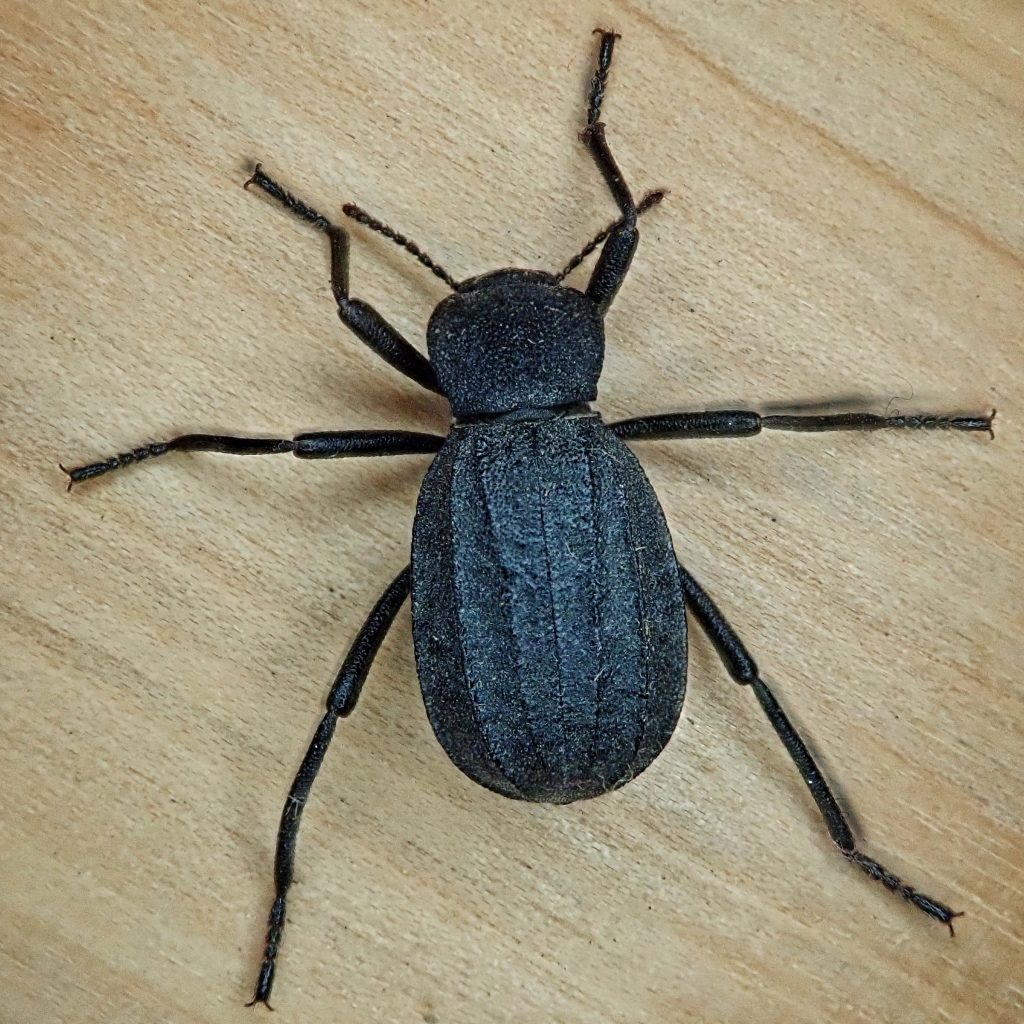
The larvae live underground for almost two years, a useful adaptation for a climate with brutally hot and dry summers and frigid winters, eating decomposing organic matter as it filters into the soil. They pupate at the end of their second summer, and eclose as mature adults shortly after the first rains of fall. One interesting finding from lab studies is that adults live just as long, and lay just as many eggs, if they are not fed at all, as they do when consuming their preferred foods on a daily basis.
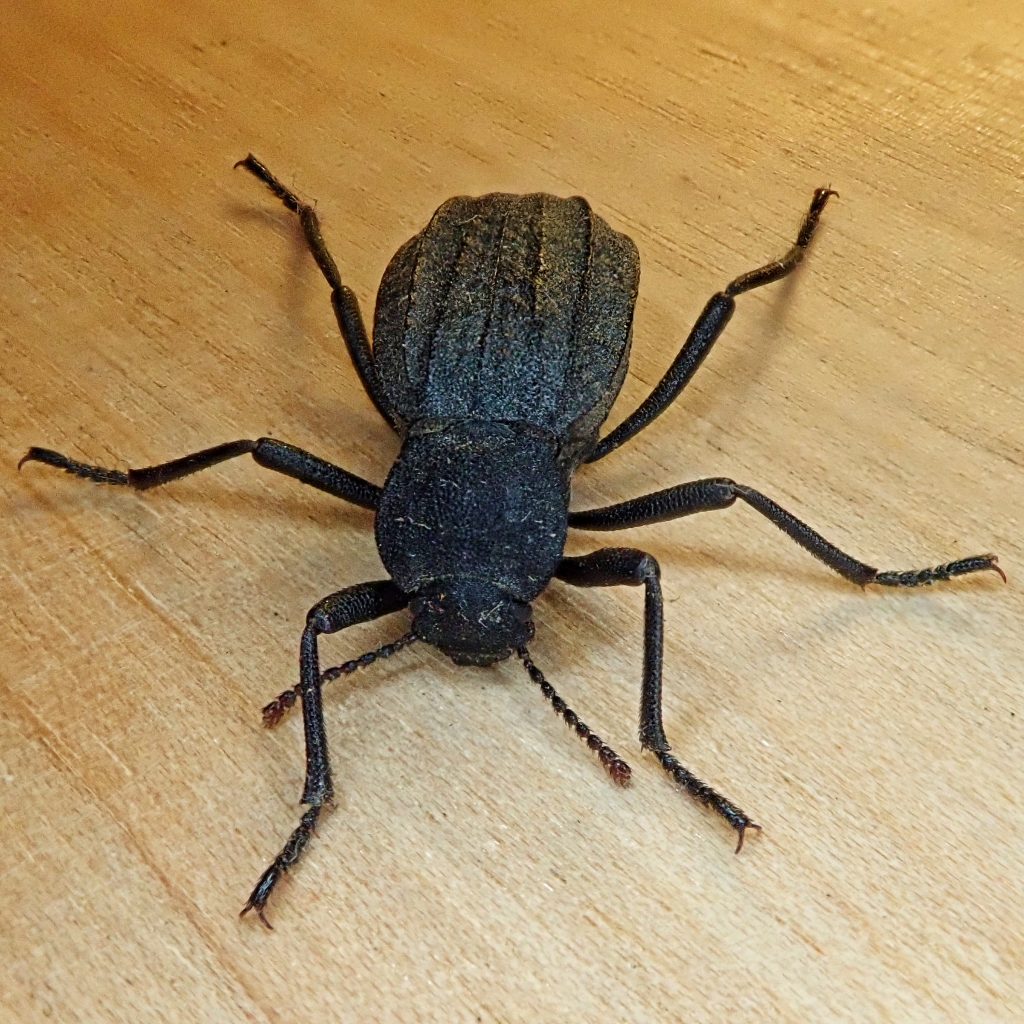
Description– Fairly large (15-20mm long- this one is 18mm), dark grayish brown to black, with 3 conspicuous ridges on each elytron; the surfaces of the elytra and pronotum are very rough.
Similar species–Stenomorpha puncticollis is often found with Philolithus densicollis, but its elytral ridges are shallower and less defined, its surface is more wrinkled than rough, and its elytra do not narrow to form a sort of collar around the rear part of the pronotum as they do in P. densicollis.
Habitat– Arid scrublands and sagebrush steppe.
Range– Little is known for sure but it is probably found east of the Cascades, in suitable habitat, from BC to n California and Nevada.
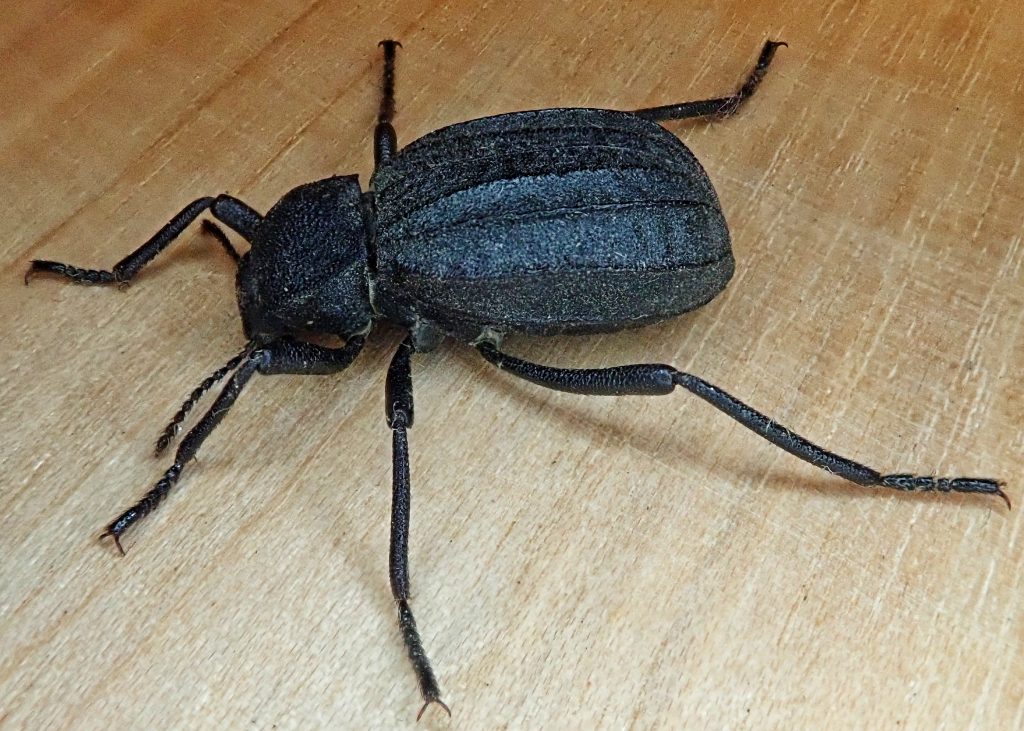
Eats– Larva eat decomposing organic matter in the soil. Adults feed on a variety of plants including mustards, Winterfat (Krascheninnikovia lanata), sagebrush, and greasewood, as well as many different cryptogam. Mosses and lichens are clearly an important part of the adult diet, and in one study they were the only type of organic matter found in the stomach of every one of the beetles examined.
Eaten by– Coyotes prey heavily upon them, and at times their scat was found to be 90% beetle exoskeletons. They are also gobbled up by insectivorous birds and small mammals. The only arthropod known to eat them is the Black Widow Spider.
Adults active– The adults begin to appear in early September and are gone by Thanksgiving. This is not a cold weather death but a genetic ‘old age’. Even well fed and warm adults seldom live longer than 6 weeks.
Etymology of names– Philo- means ‘lover of’ and -lithus means ‘stone’. This is probably an allusion to them being found in rocky areas of the high desert. The species epithet densicollis may refer to them being den-izens of the high (-collis means high ground or hills) desert.
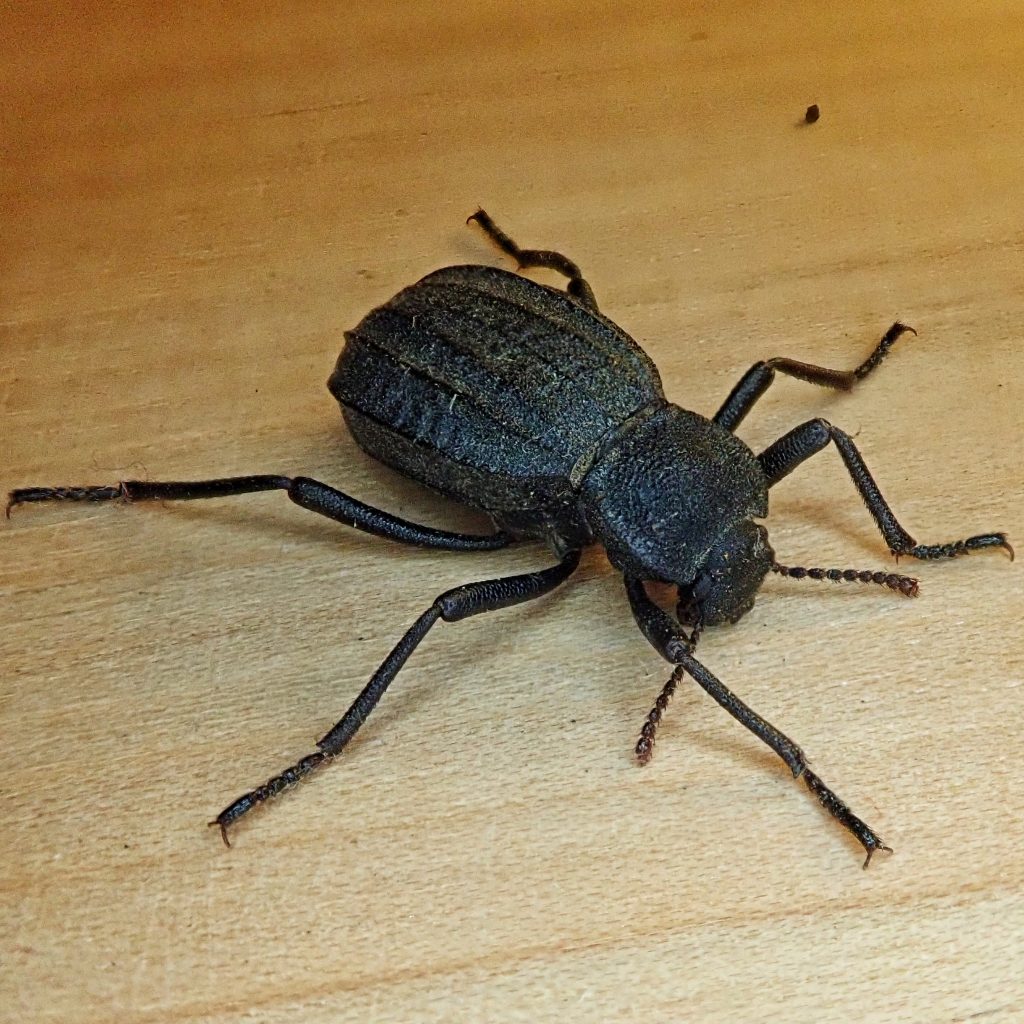
https://www.osti.gov/servlets/purl/5041122
https://bugguide.net/node/view/233773
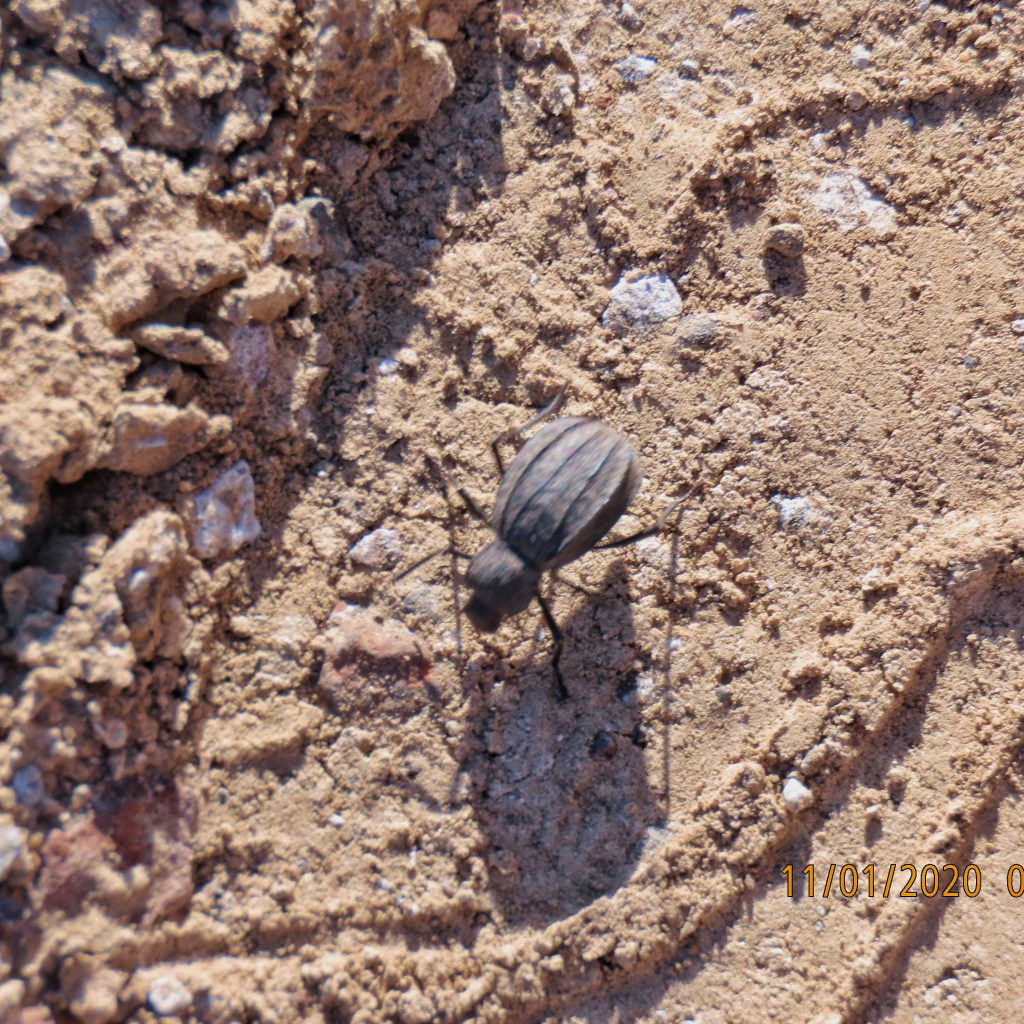
Wow – that seems crazy that the adults could live just as long and lay as many eggs if not fed than if feeding!
Very interesting! 👍☺️